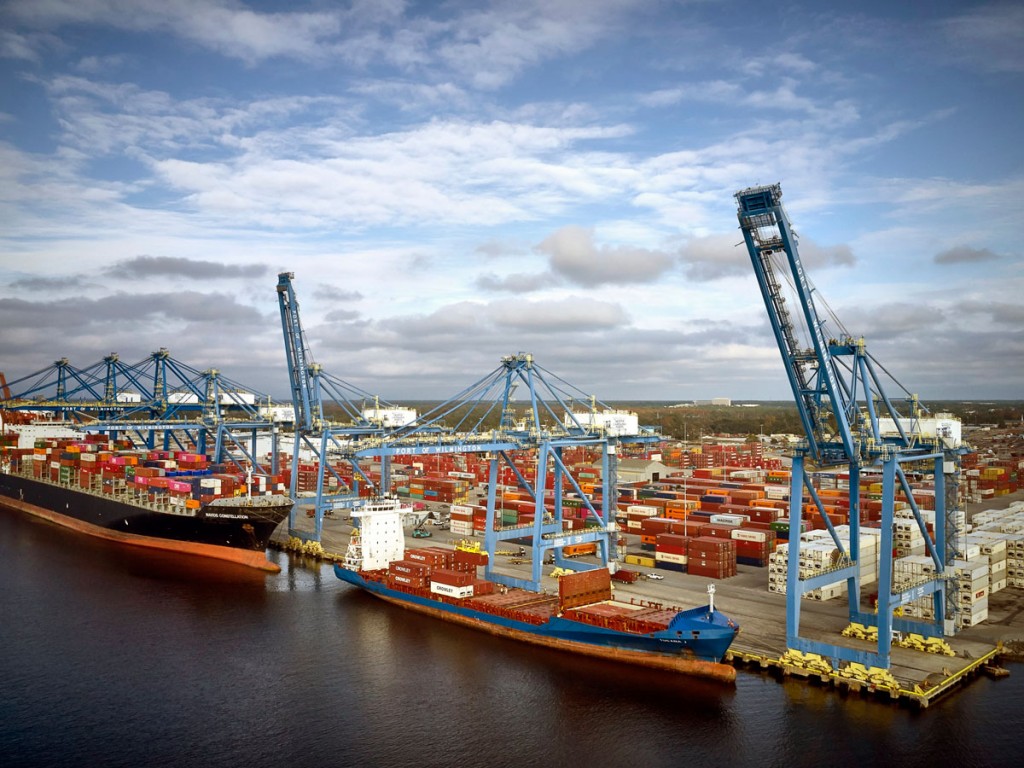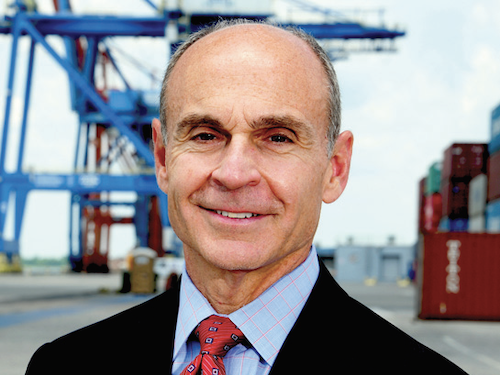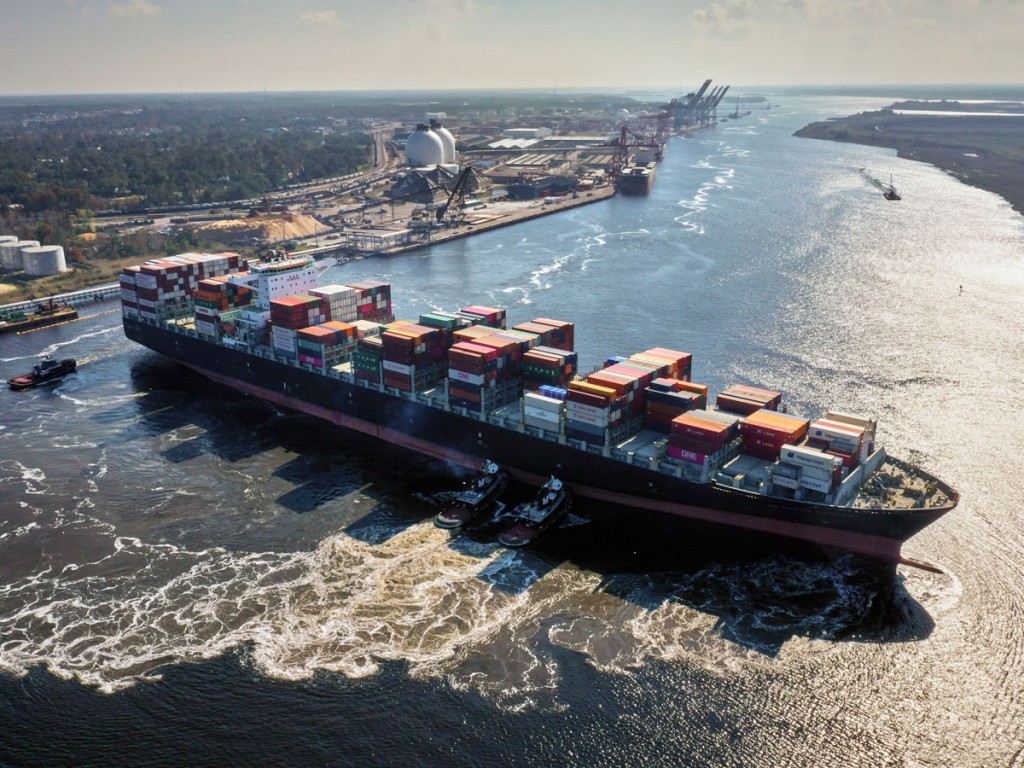When Paul J. Cozza turns the helm of the North Carolina State Ports Authority over to Brian E. Clark at yearend, he intends to do so with confidence the Port of Wilmington will continue to blossom as a U.S. Southeast trade gateway, building upon its ability to efficiently accommodate megacontainerships.
“It has been for me a really, really good ride, and I mean that sincerely,” said Cozza, a former Maersk Line executive who assumed the top spot at NC Ports in April 2014. “When I got into North Carolina Ports, we really needed a direction, and we really needed a plan.

Progress at the Port of Wilmington, under NC Ports’ $200 million capital improvement program, has included opening of 2,600 contiguous feet of container berth space and a new refrigerated container yard, as well as completion of turning basin expansion and air draft raising endeavors on the Cape Fear River, which bodes to be deepened to 47 feet, pending congressional funding signoff.
“I think we’ve really made some great achievements,” he said. “We’ve put in a whole infrastructure plan that’s not 100 percent complete – and you’re never complete, you keep moving forward – but we’ve made a lot of headway.
“And there’s no question we’ve brought in a commercial awareness around the world of North Carolina Ports’ capabilities and the capabilities of North Carolina as a state,” Cozza added. “It’s been really fun. It really has.”
Cozza, who announced his retirement plans back in June, is quick to share credit.
“I mean it wholeheartedly when I say it’s a team, the team being the person in my job and the folks here at the port who are most important,” Cozza said. “But we could not have achieved these things if we didn’t get support from a lot of different entities around the state – our governor’s office, our general assembly members, our other political leaders in and around the state, federal and local as well. The state is behind this at all levels.”

Critical to advancement has been the understanding that international logistics is a significant economic driver, Cozza said, noting that port activities in the Tar Heel State support more than 87,700 jobs.
Cozza expressed “total faith” that Clark, a former APM Terminals executive who has been chief operating officer of NC Ports since June 2017, and his team will “keep the organization continuing to move forward at light speed.”
Much of the efforts of NC Ports revolve around handling some of the world’s largest containerships, such as the MV Hyundai Hope, with a capacity of 13,154 twenty-foot-equivalent units, which called Wilmington in May.
“On the container side, the ultimate achievement is that we’re clearly competing with the ports around us in capabilities to take these ultralarge neo-Panamax vessels,” Cozza said. “That is our strategy, and it was a bit of catch-up. We needed to catch up very quickly to be able to show those capabilities.
“It’s all those investments we made to show proof of concept and to show we’re in the game,” he said. “At the same time, we’ve also kept that top-notch level of service, with unparalleled port productivity, on the berth, in the yard and at our gates. We have the best productivity on the East Coast.”
NC Ports reports truck turn times of 30 minutes or less for dual moves and ship-to-shore crane moves “easily in the 40s” per crane per hour, he said. Wilmington’s gantry contingent includes three neo-Panamax cranes added in 2018 and 2019 to four ship-to-shore units already in place.
Efficiencies are anticipated to get a further boost as revamping of the port’s container interchange area moves toward completion in mid-2021, when 13 truck lanes are to be available.
Temperature-controlled cargos are at the forefront at the Port of Wilmington, where refrigerated container volume has almost quadrupled from 2015 to 2020. A new refrigerated container yard has nearly tripled the number of on-terminal reefer plugs to 775, with additional expansion planned.
“We’ve kind of just touched what we think we’re capable of over time,” Cozza said of the Port of Wilmington’s reefer business. Exports include pork, chicken, turkey and sweet potatoes, joined in recent years by imports of fresh produce.
“We want to continue on the fresh side to see that growth,” Cozza said. “We’re doing fruits and vegetables now, because every loaded reefer in is guaranteed a loaded reefer out, and we see more and more possibilities there as time goes on.”
The Port of Wilmington also is beefing up its intermodal connections.
In 2016, the Port of Wilmington got its first intermodal service in three decades with unveiling of a double-stacked container shuttle between the port and the CSX intermodal terminal in Charlotte. And CSX looks to complete a 330-acre intermodal facility in Rocky Mount by the end of 2021, opening up prospects for daily trains between the port and that new hub and offering to container lines of expanded service to such Midwest markets as Cleveland, Columbus and Chicago.

Cozza noted that, with the COVID-19 pandemic, unimpeded speed to market has become increasingly imperative for beneficial cargo owners and the carriers serving them, commenting, “That’s what we think is going to launch us in these next years even more.”
Cozza said he believes Asia commerce will continue to be a large growth area for the Port of Wilmington, with Latin American and European trade continuing to expand as well. He sees key commodities continuing to be led by finished goods, retail items, furniture, textiles and, above all, refrigerated cargos, including fruits and vegetables.
Also envisioned are increased regional investments in cold storage infrastructure – augmenting the 3-million-cubic-foot Port of Wilmington Cold Storage facility opened on terminal in 2016 under a public-private partnership – and in warehouse and distribution centers. One recent addition has been a hub for furniture retailer Rooms To Go.
Beyond containerized cargo, the Port of Wilmington handles general cargos such as lumber, cement and steel and – since the opening in 2016 of Enviva Partners LP’s on-port terminal – been doing a healthy business in wood pellet exports.
“Diversification is a good thing, as you know,” Cozza said, commenting that the broad portfolio of import and export commodities has helped sustain record overall activity at the Port of Wilmington through present global challenges.
NC Ports also has been investing in the Port of Morehead City, about 100 miles northeast of Wilmington, where a new multipurpose Liebherr crane entered service in 2019. Imports of organic grains from the Middle East and South America have added to a Morehead City cargo mix featuring iron ore, lumber and cement imports.
“What we’ve built here is the foundation,” Cozza said. “Where the organization is going to move forward is building all on this. It’s just really a start. I feel confident the growth is going to be exponential in these next years, because now the foundation is here.
“I’m very happy,” he added. “However, we’ve got a lot still to do, and I know the team here will keep it going.”





